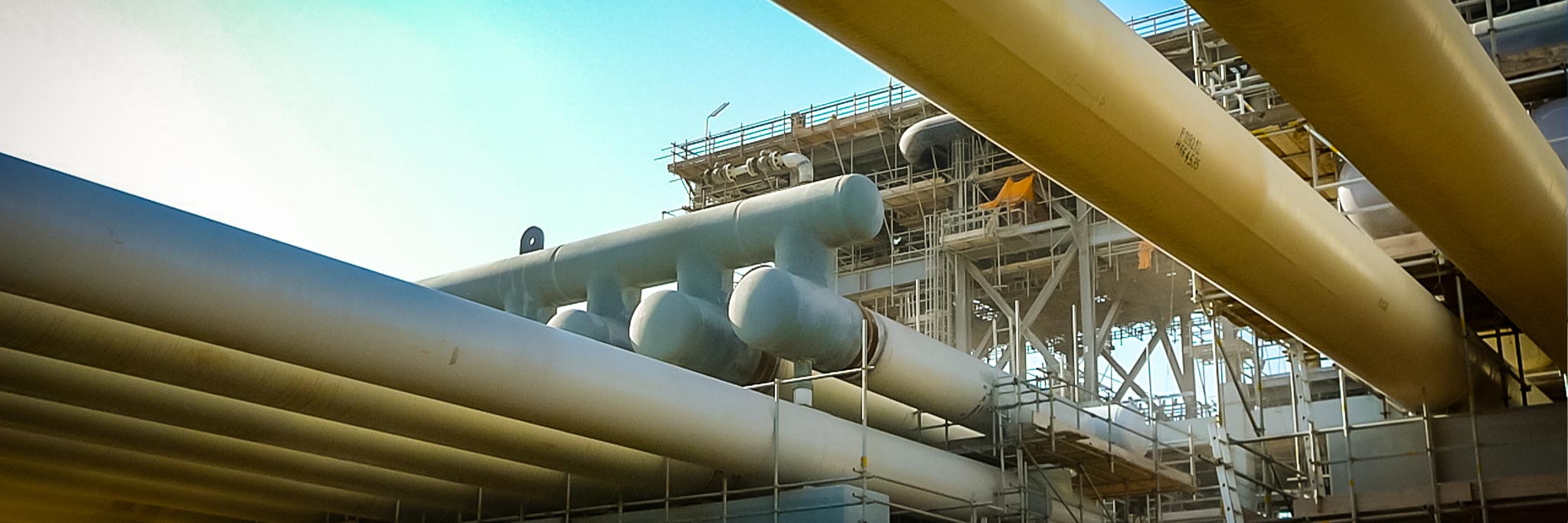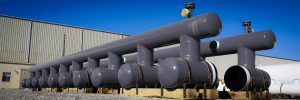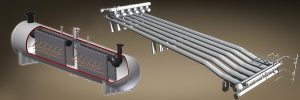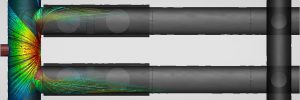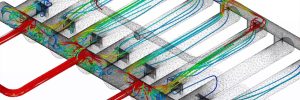What is a slug?
To understand the performance aspects of a slug catcher, it first helps to understand why we need a slug catcher in the first place. A slug is an uneven distribution of liquid and gas in a pipeline. Pipelines transport both gas and liquids in two-phase flow. Liquids tend to settle in the bottom of pipelines, while the gases occupy the top section. Under certain conditions, the liquids and gases may group together to form slugs. When the liquid slug exits a pipeline it can overload your gas/liquid handling capabilities at the plant. In this situation, the plant needs a slug catcher.
Slugs can be generated by different mechanisms in a pipeline:
Terrain Slugging – refers to the accumulation of liquid in the low points of a pipeline. The change in the elevations throughout a pipeline cause the liquid to ‘fall out’ leaving liquids in low places to form slugs. Examples would be sub-sea or at the base of a mountain.
Hydrodynamic Slugging – refers to gas flowing faster than liquid, causing a wave effect. Examples may be a pipeline traveling down a mountain causing extreme velocities through the piping.
Pigging Slugs – refers to the liquid pushed through a pipeline by a piece of equipment referred to as a pig.
What is a slug catcher?
A slug catcher is a wide spot in a pipeline to hold condensate. The slug catcher is the first piece of equipment seen after the pipeline but before the processing facility. The primary purpose of the unit is to perform the initial bulk gas-liquid separation. Slug catchers, by nature, are a form of risk management. A well designed slug catcher prevents carryover of large liquid particles that can be harmful to downstream equipment. Unlike most other equipment in a Gas, Cryo, and/or LNG facility, there’s typically limited or no redundancy beyond the slug catcher (typically just a smaller inlet separator or scrubber incapable of handling liquid slugs). Slug catchers are unique because they are at the end of the pipeline and before the plant, so they can be fabricated to the B31.8 pipeline code in lieu of the plant code, B31.3. For smaller storage applications, ASME Section VIII vessels will suffice in lieu of a finger type.
The Taylor Forge Slug Catcher Difference.
With over 50 years of slug catcher experience, we are the worldwide leader in finger / harp style slug catchers. As a single source for process design and fabrication, our approach can assure you that your downstream assets will be properly protected. To learn more about our design approach or more broadly about how finger slug catchers work and if you need one, please see the links below.

